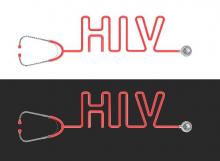The Centers for Disease Control and Prevention has released evidence-based guidelines for nonoccupational postexposure prophylaxis (nPEP) for exposure to HIV outside the health care setting.
The guidelines, Updated Guidelines for Antiretroviral Postexposure Prophylaxis After Sexual, Injection-Drug Use, or Other Nonoccupational Exposure to HIV – United States, 2016, update and expand the 2005 U.S. Department of Health & Human Services recommendations for U.S. physicians and others treating patients exposed to HIV after sexual encounters, injection-drug use, or other nonoccupational exposures.
The updated guidelines are to help U.S. clinicians in reducing new HIV infections through efficient delivery of nPEP to patients soon after they have a single exposure outside of health care settings to blood, genital secretions, or other potentially infectious body fluids possibly containing HIV. This update includes new evidence from human and animal studies, as well as pediatric dosing information.
According to the CDC, the update was spurred by new data regarding clinical delivery of nPEP; the development of newer, better-tolerated antiretroviral drug regimens with fewer side effects; and new estimates of nPEP cost-effectiveness as an HIV prevention method. In 2013, the CDC published updated occupational PEP guidelines for use after possible HIV exposures in health care settings.
In addition to urging adoption of the updated nPEP guidelines by clinical care providers, the CDC is also encouraging adoption by emergency medical technicians, social workers, administrators of Crime Victims Compensation programs, and others caring for sexual assault survivors; specialists in HIV prevention planning, service delivery, policy, and legislation; persons with HIV and their partners; administrators of pharmacy assistance programs; and managers of medical assistance programs, health insurance plans, and health systems.
The CDC said materials supporting implementation of nPEP guidelines will be posted online when they become available.
On Twitter @richpizzi


